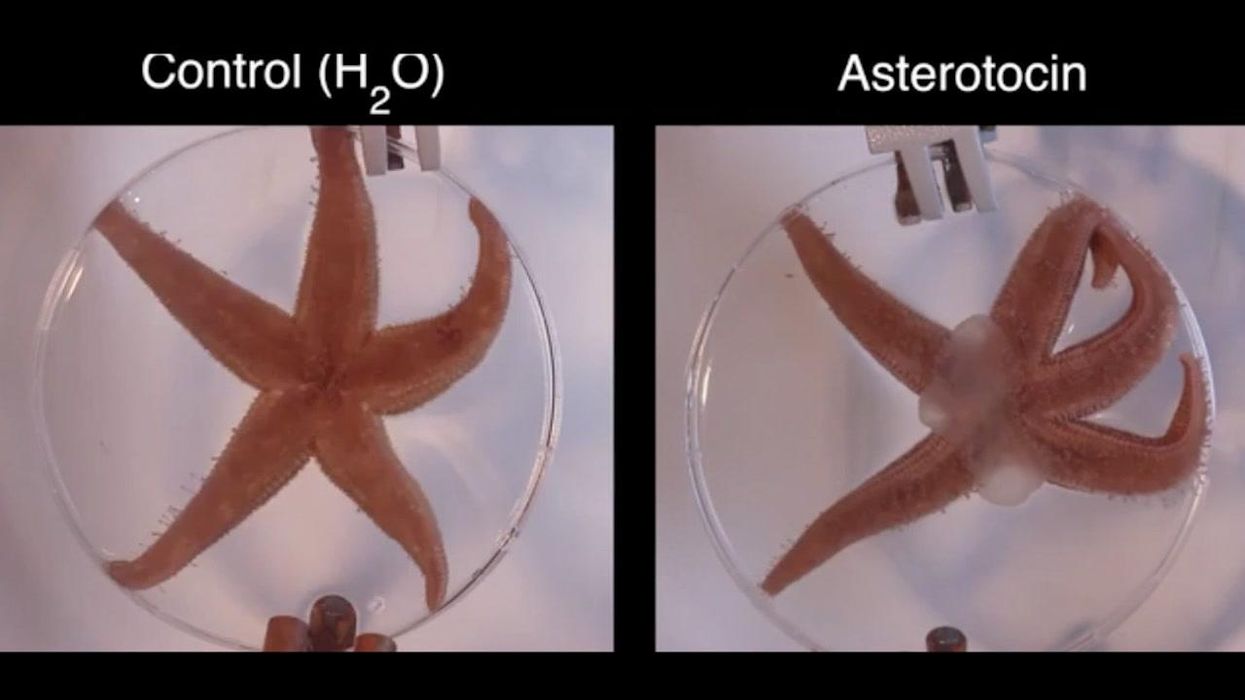Breanna Robinson
Oct 03, 2022
Oxytocin turns starfish stomachs inside out
Video
The cure for a broken heart may be closer than you think - and it includes oxytocin.
The hormone, which is dubbed the "love" or "cuddle" hormone, is known for its role in creating social bonds and trust between people. Its levels often increase when people have moments of intimacy, such as cuddling.
It also triggers contractions during childbirth, promotes lactation, reduces inflammation, and lowers blood pressure in the body, as stated in the Frontiers in Psychology Journal in 2020.
But, a new study shared in the journal Frontiers in Cell and Developmental Biology on 30 September highlights the other benefit of oxytocin - at least in zebrafish.
The hormone helps the heart replace injured or dead cardiomyocytes, which are the muscle cells that propel heart contractions.
Sign up to our free Indy100 weekly newsletter
Early results in human cells indicate that oxytocin could stimulate similar effects in people if the timing and dose are just right.
The study's authors said the heart has minimal window repair or replaces damaged or dead tissue.
But many studies suggest that after an ailment like a heart attack, the epicardium, a subset of cells in the heart's outermost membrane, migrate down into the layer of heart tissue where muscles are and turn into stem-like cells. This can then turn into several heart cell types, including cardiomyocytes.
This process has mainly been studied in animals, with some evidence indicating that it could happen in adult humans.
Regrettably, if the process does happen in people, it appears to unfold too inefficiently and in too few cells to get meaningful tissue regeneration after a heart attack, the authors said.
If there is a way to encourage the morphing of more epicardial cells into cardiomyocytes, the authors hypothesised that scientists could help the heart rebuild itself after injury.
The authors discovered that they could jump-start this process in human cells in a lab dish by presenting them with oxytocin.
They also tested it on 14 other brain hormones but couldn't make the cells into the desired stem-like state required to make new cardiomyocytes.
The team then did follow-up experiments in zebrafish, which is in the minnow family known for its impressive ability to regenerate tissues in their bodies.
Within three days of cardiac injury, the team discovered the fishes' brains began pumping out 20 times more oxytocin than they had before the injury.
These experiments indicate that oxytocin may play a key role in heart repair after injury.
And enhancing its effects, scientists could develop new treatments to improve patients' recovery after heart attacks and reduce instances of heart failure in the future.
"Oxytocin is widely used in the clinic for other reasons, so repurposing for patients after heart damage is not a long stretch of the imagination," said Aitor Aguirre, the senior author and assistant professor at Michigan State's University Department of Biomedical Engineering.
"Overall, pre-clinical trials in animals and clinical trials in humans are necessary to move forward."
Have your say in our news democracy. Click the upvote icon at the top of the page to help raise this article through the indy100 rankings.
Top 100
The Conversation (0)














